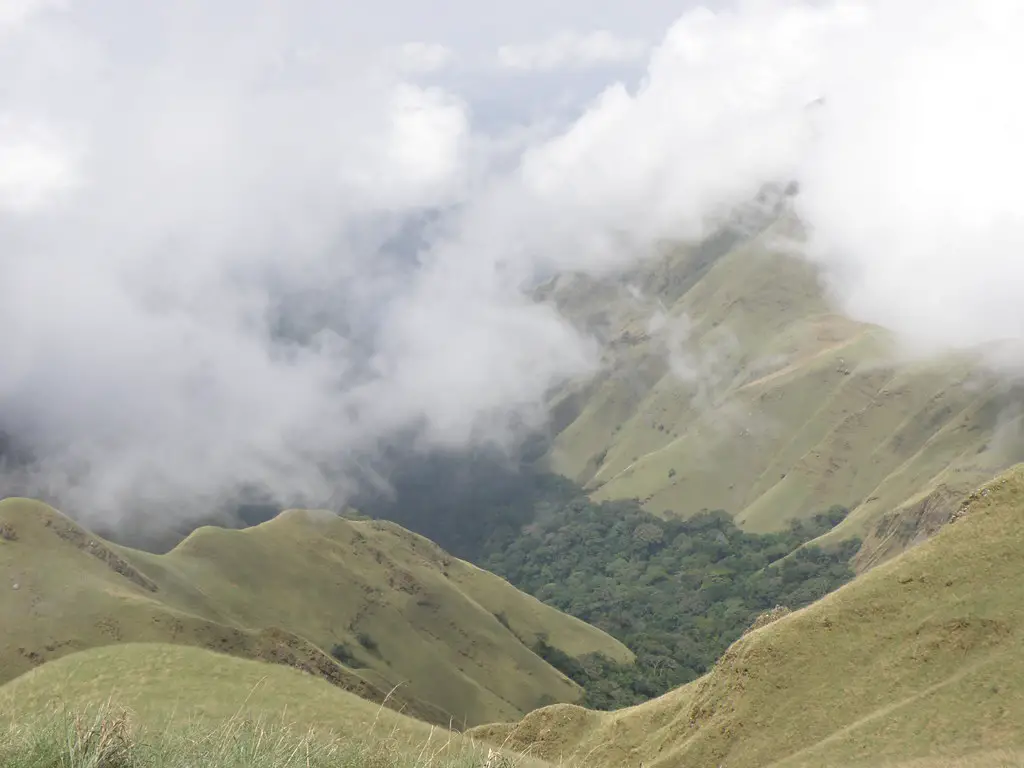💪 Support independent web, support us:
Mount Nimba is a mountain range spanning across Liberia, Guinea, and Cote d’Ivoire.
What to see or do: The mountain range is a UNESCO World Heritage site and offers stunning views of the surrounding landscapes. Hiking and trekking are popular activities for visitors.
Don’t miss: The exceptional biodiversity of Mount Nimba is a must-see attraction. The mountain is home to various endemic animal and plant species.
The Nimba Otter Shrew, viviparous toad, and western chimpanzees are unique animals found in this region.
Insider travel tips: Visitors should note that the region is home to various tribes, and it is essential to be respectful of their cultures and beliefs.
The weather can be unpredictable, so travelers are advised to pack accordingly. Hiring a local guide is also recommended for a safe and enjoyable trip.
2. Iles de Los

A group of small islands off the coast of Conakry, the capital of Guinea.
What to see or do: There are a variety of activities to keep you busy on the Iles de Los, from swimming and sunbathing on the beaches to snorkeling and scuba diving in the turquoise blue waters.
Visitors can also enjoy exploring the villages on the islands, trying local seafood dishes, and experiencing the vibrant culture.
Don’t miss: Make sure to check out the stunning views from the top of Perroquet Island, one of the largest islands in the group, and take a boat tour to see the different islands from the water.
Insider travel tips: Be sure to bring cash with you, as there are limited ATMs on the islands.
Also, while the islands are generally safe, it’s always a good idea to keep an eye on your belongings and stay aware of your surroundings.
3. Dinguiraye Mosque
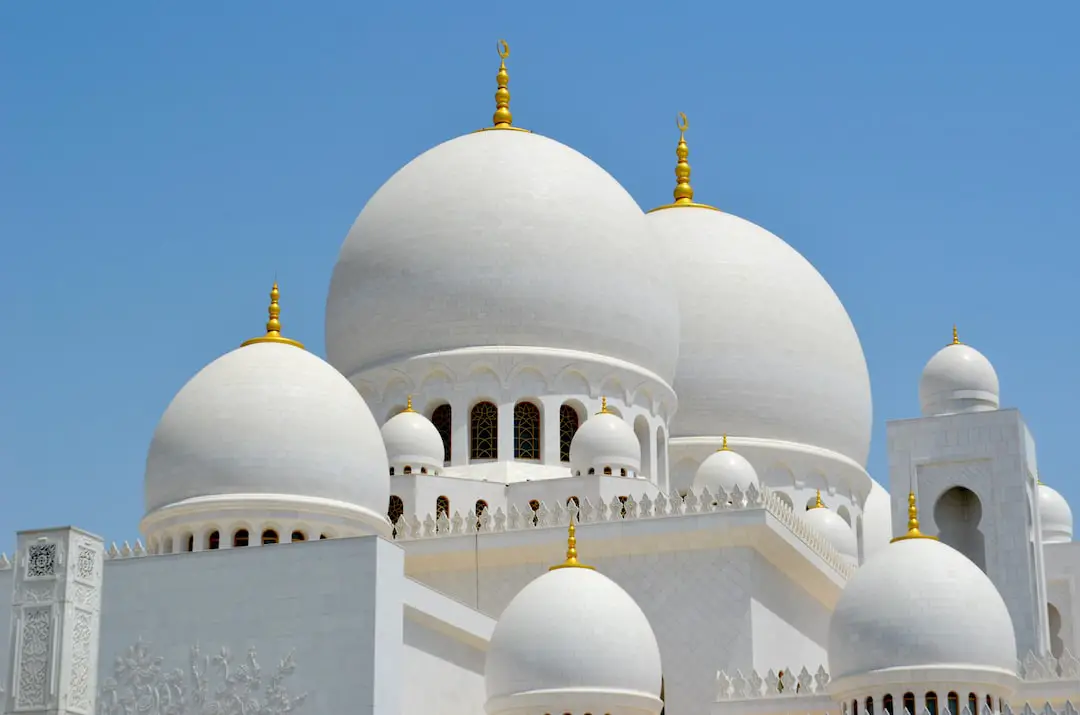
One of the largest and oldest mosques in Guinea, located in the town of Dinguiraye in the Fouta Djallon region.
What to see or do: Admire the beautiful architecture of the mosque, which features ornate tile work and intricate carvings. Take a guided tour of the mosque and learn about its history and significance to the local community.
Don’t miss: Visiting during the annual pilgrimage to Dinguiraye, which takes place in the Islamic month of Safar and attracts thousands of worshippers from around the world.
Insider travel tips: Be sure to dress modestly and remove your shoes before entering the mosque. Consider hiring a local guide to enhance your understanding of the mosque’s cultural and religious significance.
4. Foutah Djallon
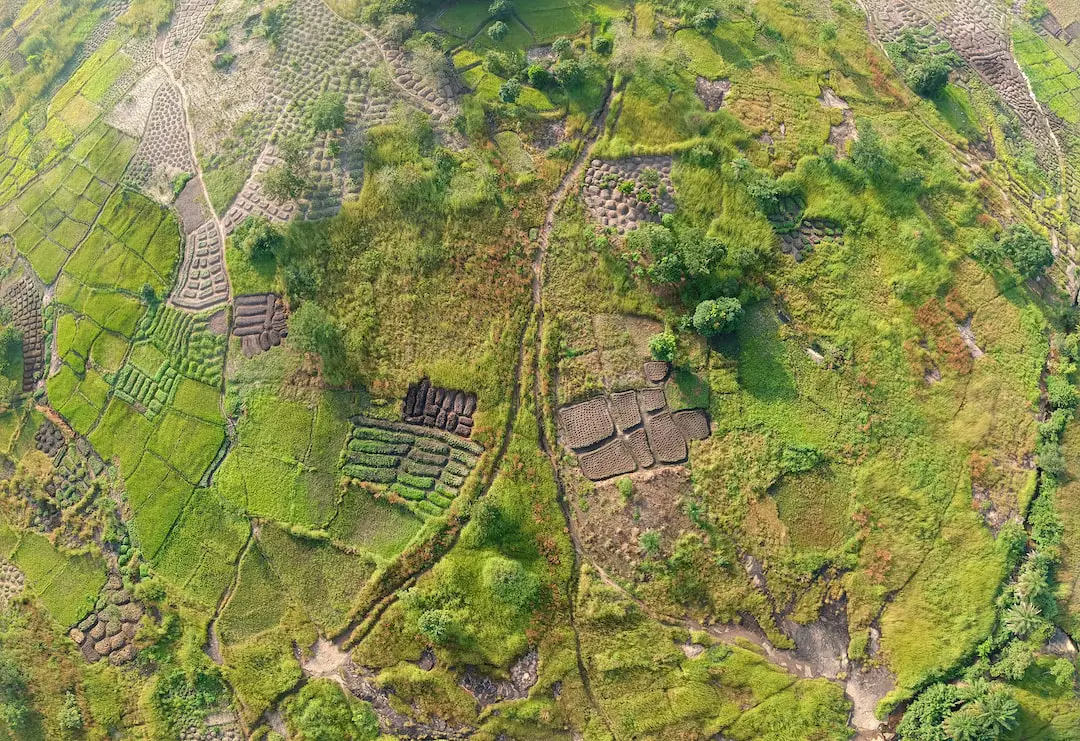
Foutah Djallon is a mountainous region located in Guinea, West Africa.
What to see or do: Explore the beautiful natural scenery, including waterfalls, rivers, and forests. Take part in outdoor activities like hiking, mountain biking, and bird watching.
Learn about the unique culture of the area, including the Fulani people.
Don’t miss: Visit the stunning Cascades de la Bala, a waterfall that is over 400 feet tall. Check out the ancient rock formations and petroglyphs at Tatiko Archaeological Site.
Experience the local market in the town of Labé, where you can find traditional crafts, food, and clothing.
Insider travel tips: Be prepared for the high altitude and cooler temperatures in the mountainous region. Hire a local guide to ensure a safe and informative visit.
Try the local specialty dish, poule de Fouta, a spiced chicken dish served with rice. Dress modestly to respect the local culture.
5. Guinea Highlands
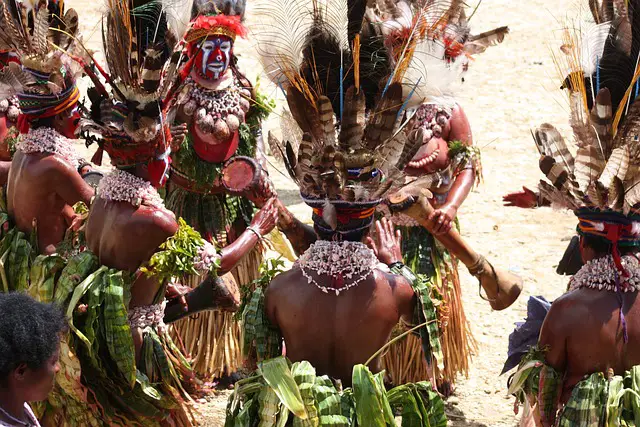
A mountainous region in West Africa spanning across several countries including Guinea, Sierra Leone, Mali, Ivory Coast, and Liberia.
What to see or do: Enjoy the scenic beauty of the landscape with valleys, waterfalls, and forests. Hike to the top of Mount Nimba or Mount Badiar for breathtaking views.
Explore local villages and learn about the indigenous cultures.
Don’t miss: The Fouta Djallon, also known as the Grand Canyon of West Africa, a stunning natural wonder with lush vegetation and waterfalls.
Another must-see is the Loma Mountains in Sierra Leone, home to the country’s only population of wild chimpanzees.
Insider travel tips: Be prepared for cooler temperatures due to the higher altitude. It’s best to visit during the dry season between November and March.
Hire a local guide to ensure safety and to learn more about the area’s history and culture. Don’t miss the chance to try local dishes such as fufu and peanut butter soup.
6. Grand Mosque of Conakry
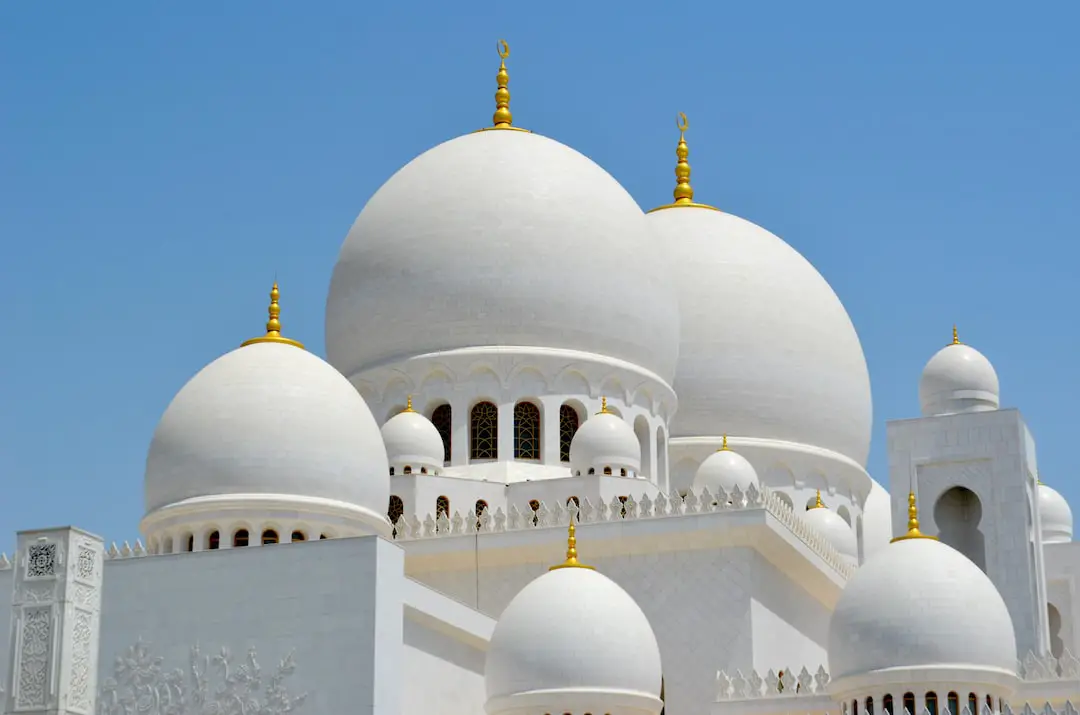
The Grand Mosque of Conakry is one of the largest mosques in West Africa. It is a religious and cultural hub that attracts devotees and visitors from around the world.
What to see or do: The mosque boasts of a spacious courtyard, ornate minarets, and a beautifully decorated interior that features intricate carvings, grand chandeliers, and stained glass windows.
Visitors can spend time exploring the mosque’s impressive architecture and observing devout Muslims as they pray and perform rituals.
Don’t miss: Make sure to witness the mosque’s mesmerizing call to prayer, which is performed five times a day, and is a remarkable display of discipline and devotion.
Insider travel tips: It is recommended to dress modestly and remove footwear before entering the mosque. Visitors should also be aware of the prayer times and avoid disruptions during the devout activities.
7. Kassa Island
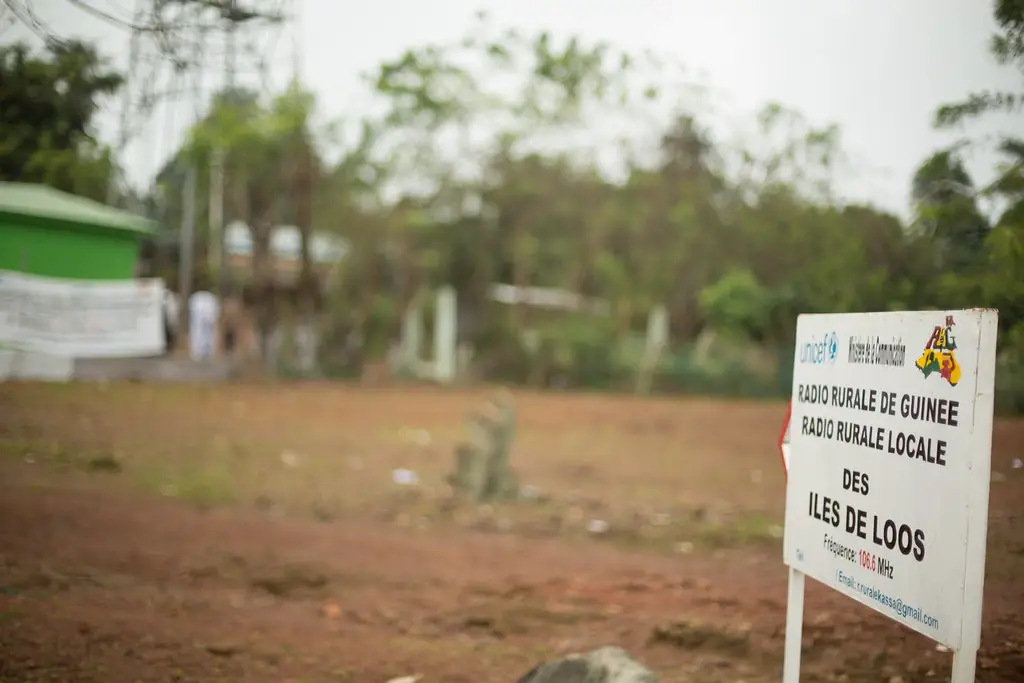
Kassa Island is a tropical paradise located off the coast of West Africa, known for its pristine beaches and crystal-clear waters.
What to see or do: – Spend the day lounging on the white sand beaches and swimming in the turquoise waters.
Don’t miss: – The colorful markets in the local villages, selling handmade crafts and fresh produce.
Insider travel tips: – Kassa Island is best visited between November and April when the weather is warm and dry.
8. Cape Verga
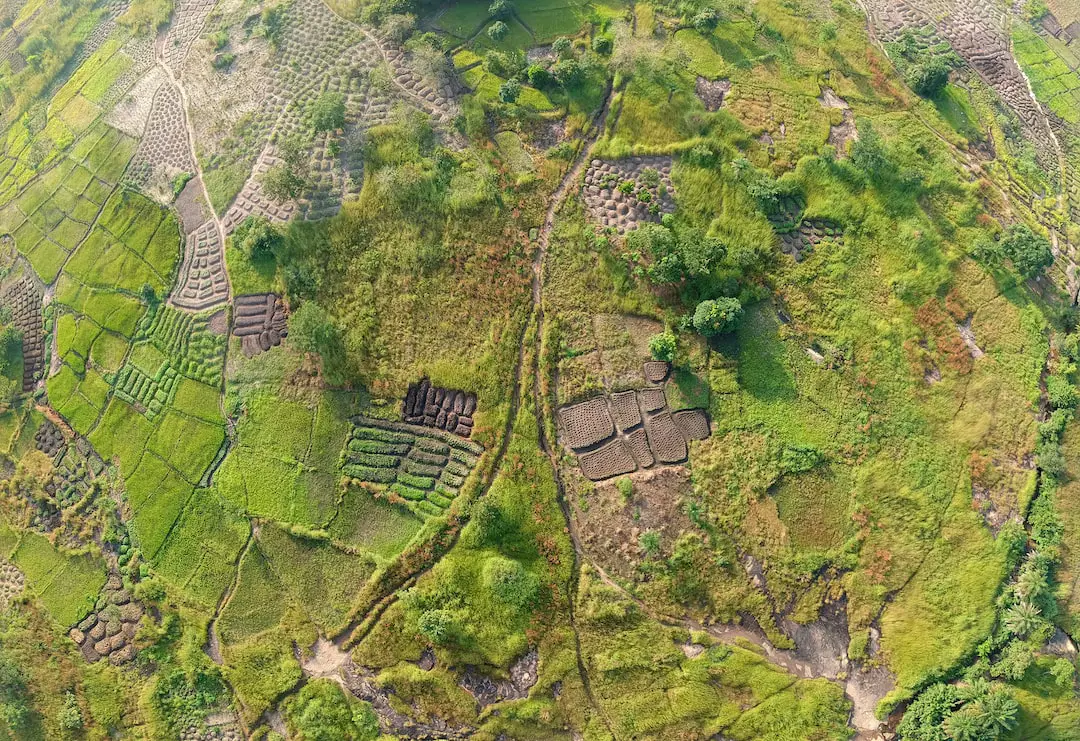
A stunningly beautiful coastal area in the region of Peloponnese, Greece.
What to see or do: Go for a hike and enjoy breathtaking views of the Aegean Sea. Visit the nearby beaches for swimming, sunbathing, and relaxing.
Take a boat tour to explore the sea caves and rock formations.
Don’t miss: Watching the sunset over the sea – it’s simply magical.
Insider travel tips: Wear comfortable shoes for hiking and bring plenty of water and sunscreen. The area can be quite windy, so bring a light jacket or sweater for the evenings.
If visiting during peak season, be prepared for crowds and book accommodations in advance.
9. Presidential Palace

The Presidential Palace is the official residence of the President of a country.
What to see or do: Visitors can take a guided tour through the palace’s opulent rooms and halls, adorned with artwork, chandeliers, and historical artifacts.
Don’t miss: The ceremonial Changing of the Guard, which takes place in front of the palace.
Insider travel tips: Check the palace’s website for opening times and ticket information, and be sure to dress appropriately for the occasion. Some tours may require prior booking, so plan ahead to secure your visit.
10. Taouyah Market
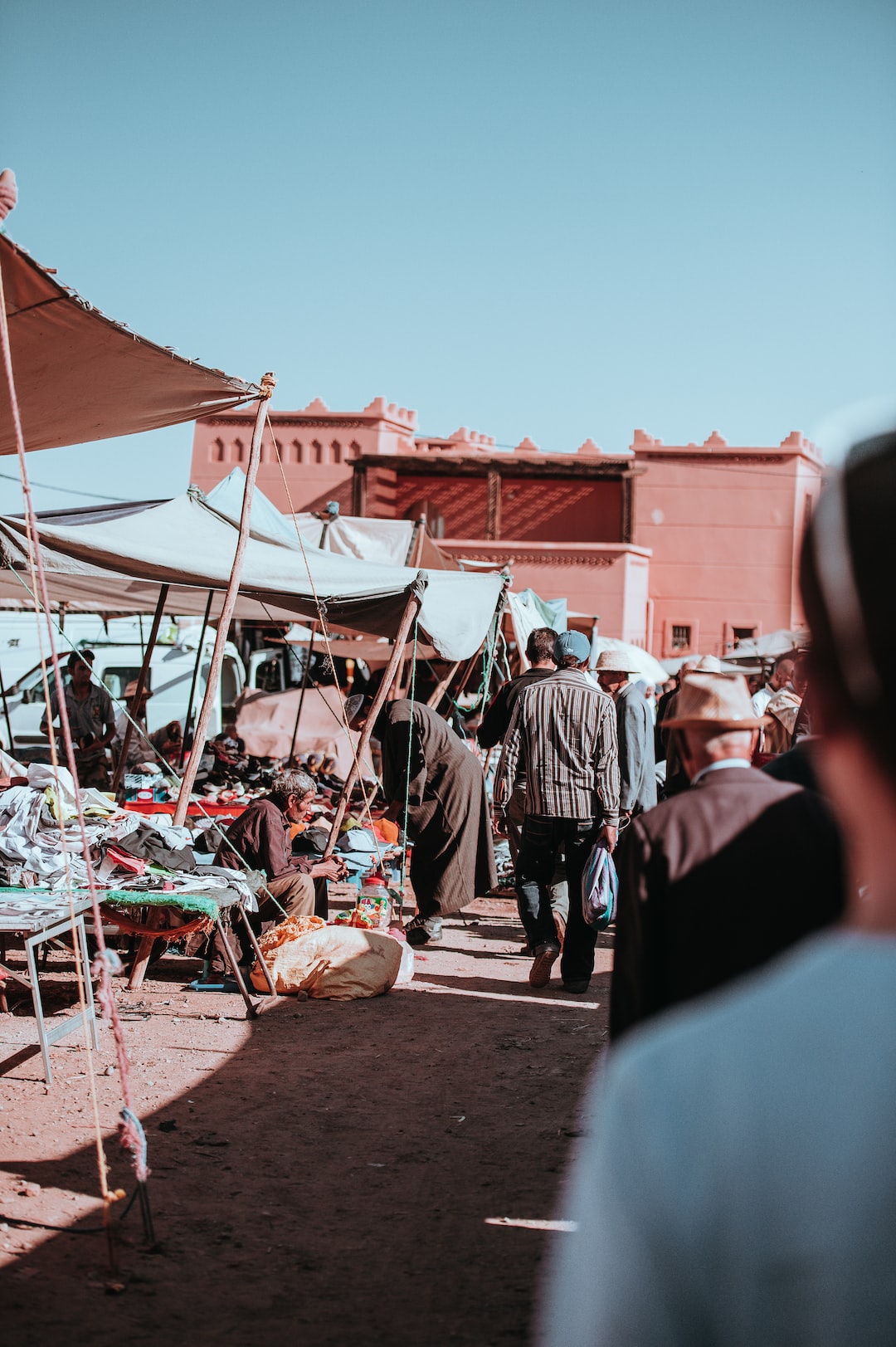
A bustling market in Conakry, Guinea, known for its lively atmosphere and variety of goods.
What to see or do: Explore the colorful stalls selling everything from produce and spices to fabrics and household goods. Bargain with vendors for a good price.
Don’t miss: The abundance of fresh fruits and vegetables, such as mangoes, pineapples, and avocados, as well as the local specialty of smoked fish.
Insider travel tips: Be prepared to haggle and negotiate prices with vendors. Watch your belongings and avoid carrying large amounts of cash.
Visit in the morning for the freshest and fullest selection of goods.
11. Sainte-Marie Cathedral
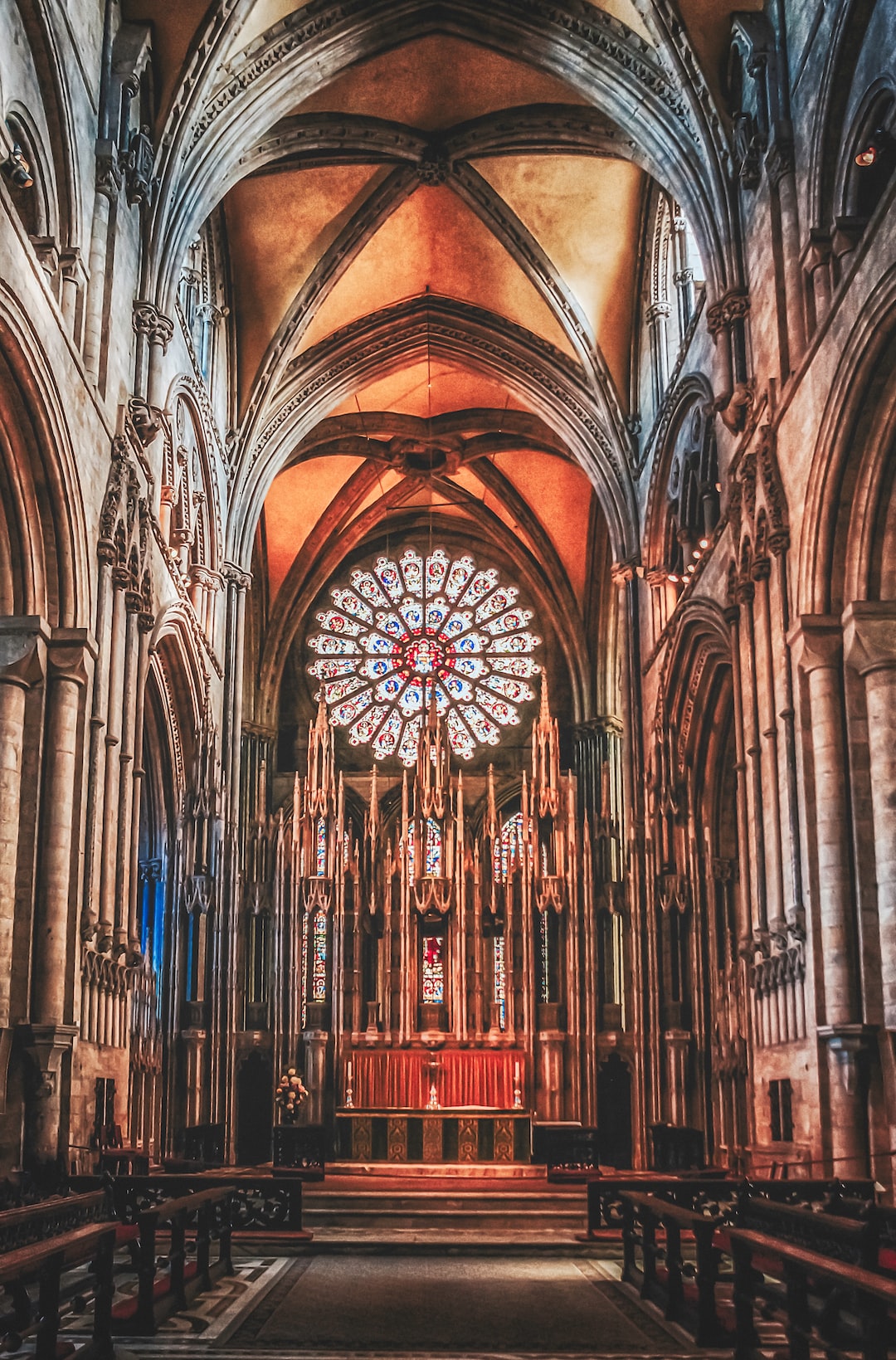
Sainte-Marie Cathedral is a Roman Catholic cathedral located in the heart of Bayonne, France.
What to see or do: The cathedral is known for its Gothic and Byzantine architecture and is home to a beautiful rosette window that dates back to the 16th century.
Visitors can enjoy a self-guided tour of the cathedral, taking in the intricate details of its stonework, stained glass, and sculptures.
Don’t miss: The stunning pipe organ, which is among the largest in Europe and is still in use today. Be sure to also visit the cathedral’s treasury, which houses religious artifacts from as far back as the 14th century.
Insider travel tips: – Check the cathedral’s schedule before visiting, as it occasionally hosts concerts and other events.
12. Conakry Botanical Garden
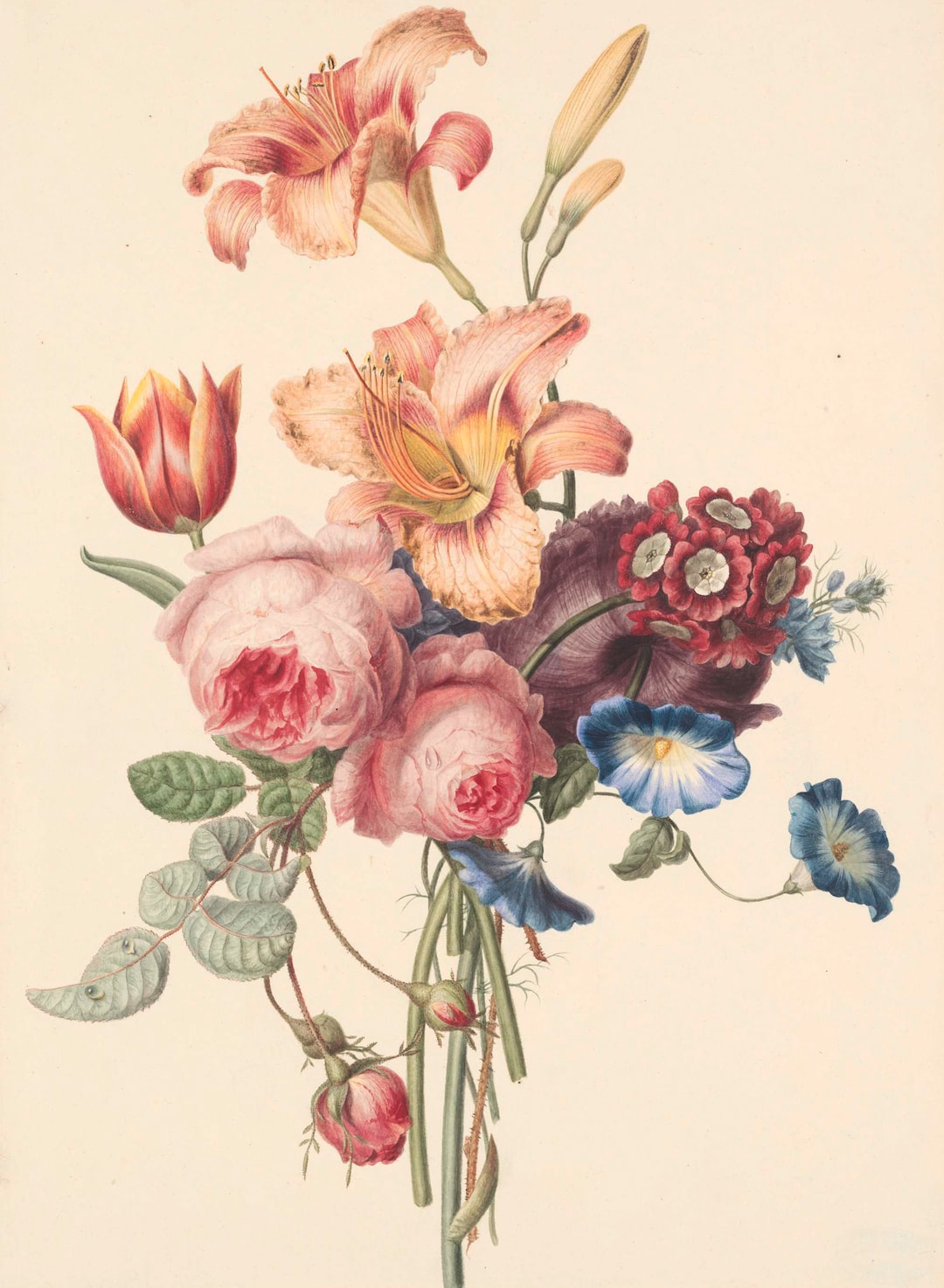
Conakry Botanical Garden is a stunning 84-acre green space located in the heart of Conakry, the capital city of Guinea.
What to see or do: Visitors can explore the garden’s rich biodiversity, with over 2,500 plant species including palm trees, fruit trees, and medicinal plants.
The garden is also home to a vast array of bird species, butterflies, and small mammals, making it a must-visit for nature lovers.
Don’t miss: Don’t miss the chance to see the endangered Colobus monkeys which reside in the garden, or the beautiful orchid garden which showcases a stunning collection of indigenous and exotic orchid species.
Insider travel tips: Bring comfortable walking shoes as the garden is quite large and takes several hours to explore.
It’s also recommended to visit the garden during the morning hours when the temperatures are cooler and the wildlife is more active.
13. Le Voile de la Mariée

Le Voile de la Mariée is a stunning waterfall located in French Guiana, South America.
What to see or do: Visitors can admire the beauty of the waterfall from various viewpoints. It is an excellent place to take pictures, relax and admire the nature around.
Don’t miss: Nearby the waterfall, there is a jungle path that leads to a natural pool where visitors can take a refreshing swim.
Le Voile de la Mariée is an amazing natural attraction that should not be missed when visiting French Guiana.
Insider travel tips: It’s recommended to wear comfortable shoes as the jungle path can be slippery.
Additionally, it’s important to bring insect repellent and sunscreen as the area is known for mosquitos and the sun can be strong.
It’s also better to visit during the dry season which runs from July to December to avoid heavy rains that can make the path more challenging.
14. Kpaghalaye Cave
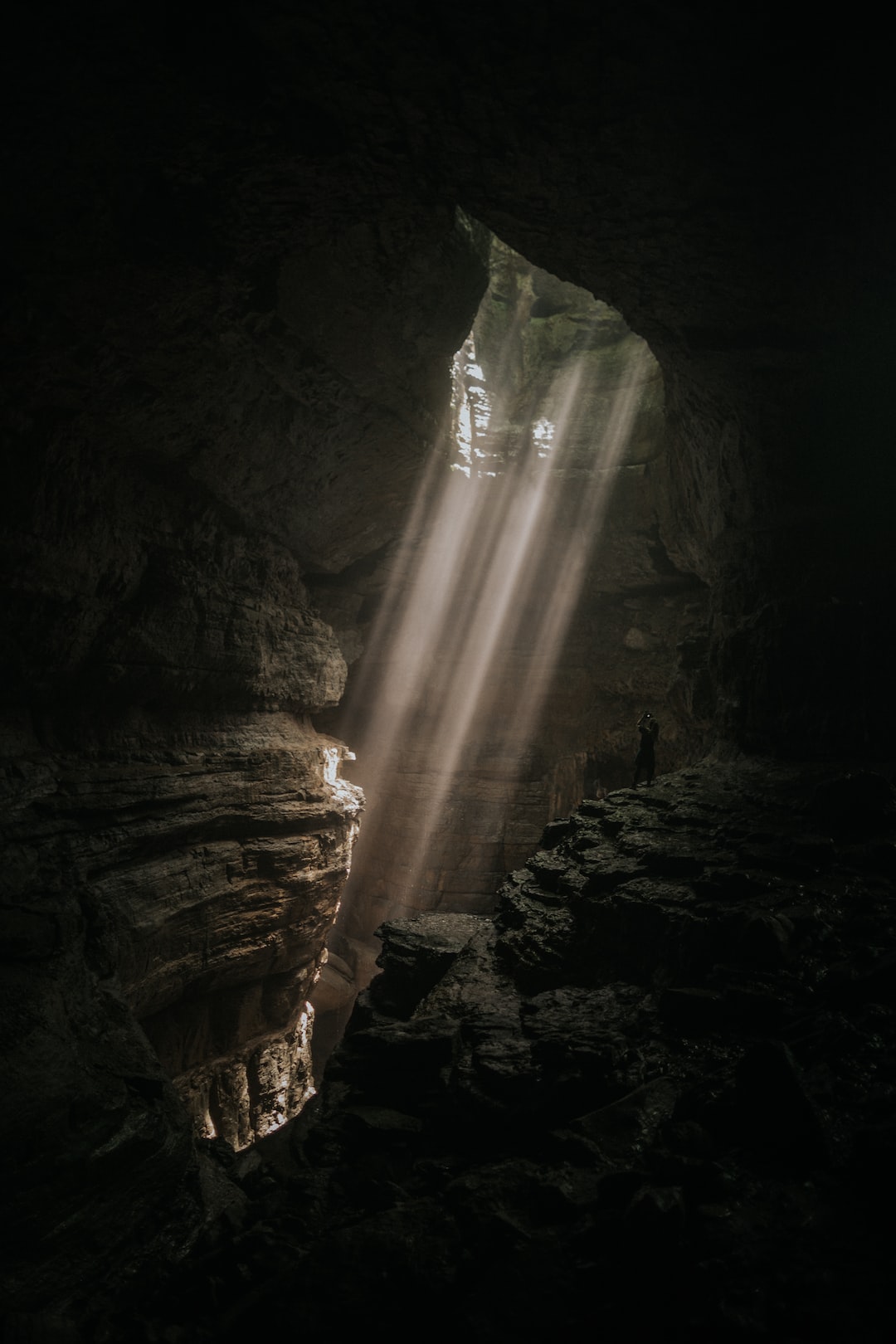
Kpaghalaye Cave is a magnificent natural wonder located in Cameroon.
What to see or do: Explore the several breathtaking chambers within the cave, including the Pillar Chamber, Cathedral Chamber, and the Ice Cream Chamber. Marvel at the stunning stalactites and stalagmites formations that decorate the cave’s walls, creating a truly magical atmosphere.
Don’t miss: Be sure to bring a camera to capture the awe-inspiring beauty of the cave’s remarkable features.
Insider travel tips: Remember to wear sturdy shoes and comfortable clothing as the terrain can be uneven and slippery. Consider bringing a flashlight or headlamp to illuminate the cave’s interior.
Going with a local guide is highly recommended for a more in-depth experience.
15. Badiar National Park
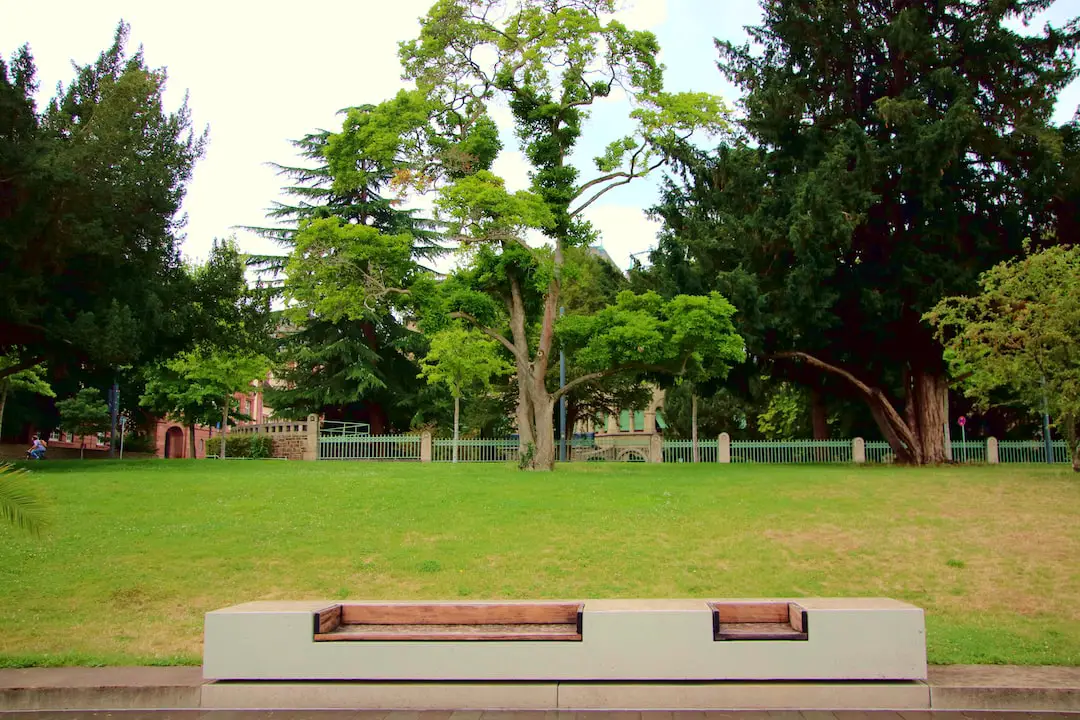
Badiar National Park is a protected area located in southeastern Guinea, near the border with Sierra Leone.
What to see or do: Visitors can hike through the dense forest and enjoy the stunning scenery that includes waterfalls, streams, and a variety of wildlife such as elephants, chimpanzees, baboons, and different bird species.
The park also offers opportunities for camping, picnicking, and swimming in the natural pools.
Don’t miss: Don’t miss the chance to take a guided tour of the park to learn about its history and significance. Be sure to also visit the nearby villages to experience the local culture and try traditional cuisine.
Insider travel tips: – Plan your visit during the dry season (November-May) when the weather is more pleasant and the wild animals are more active.
16. Kinkon Falls
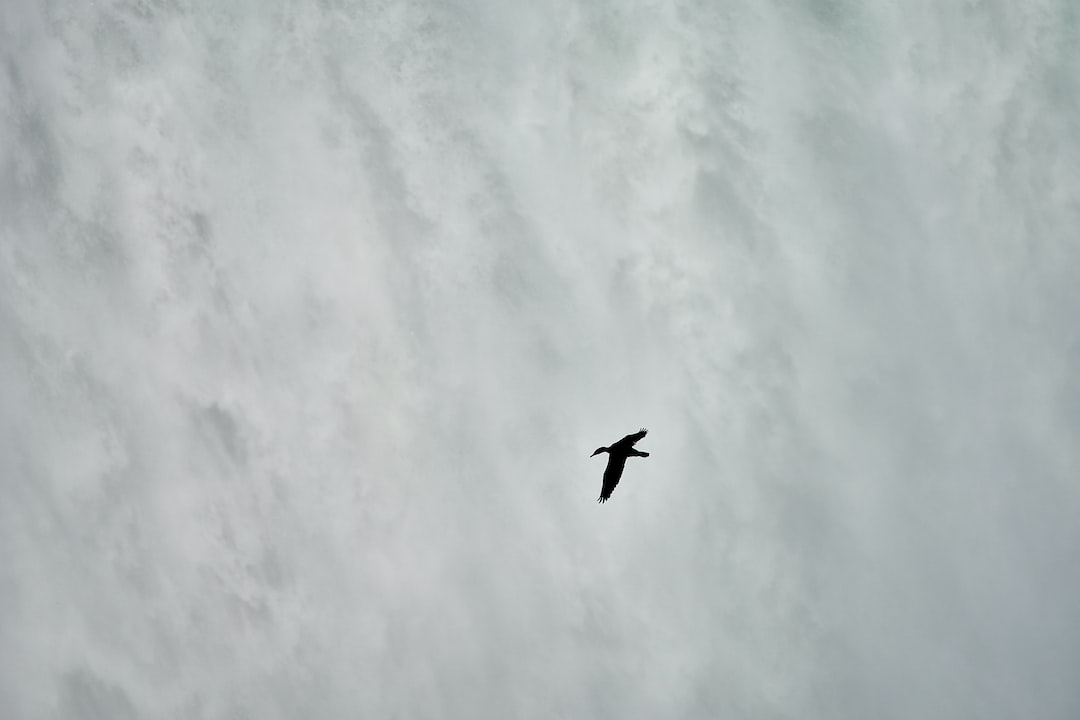
Kinkon Falls is a stunning three-tiered waterfall located in the lush rainforest region of Dimapur, in the northeastern state of Nagaland, India.
What to see or do: Visitors can hike through the scenic forest trails, enjoy a picnic by the glistening pools, and bask in the natural beauty that surrounds them.
Kinkon Falls is also a popular spot for swimming and fishing.
Don’t miss: Make sure to take in the awe-inspiring view of the cascading waterfall, which drops from a height of over 200 feet.
Additionally, keep an eye out for some rare species of birds and other wildlife that call this area their home.
Insider travel tips: – The best time to visit Kinkon Falls is during the monsoon season (June-September), when the waterfall is at its fullest and most captivating.
17. Nimba Mountains
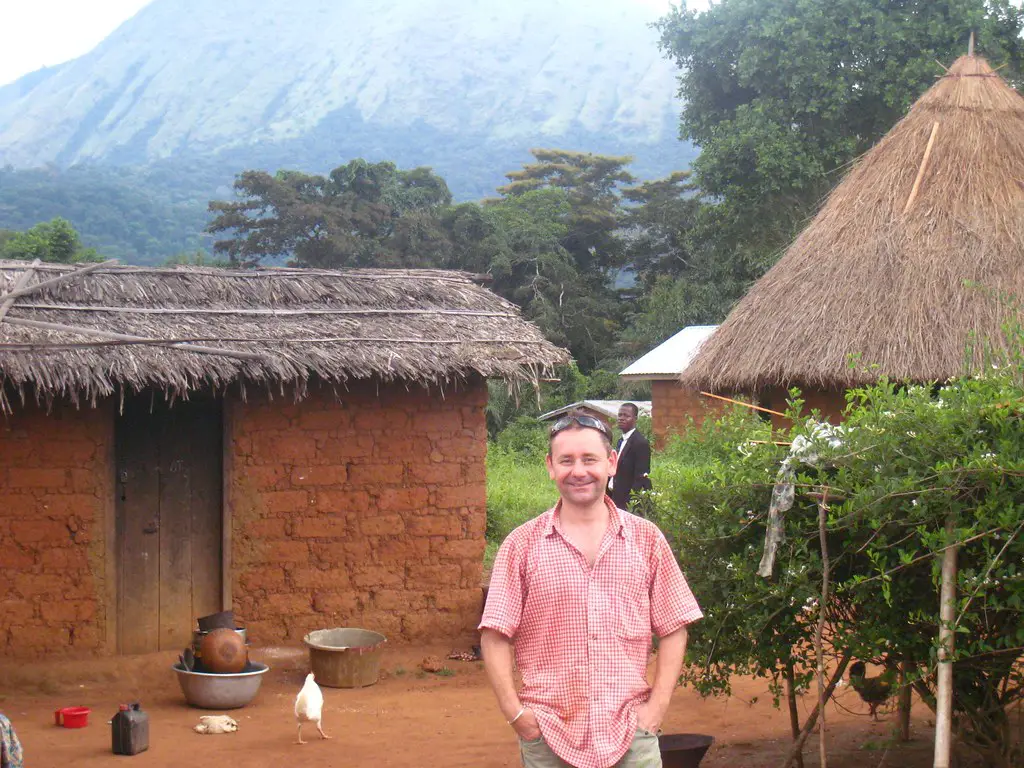
The Nimba Mountains are a mountain range that stretch across Guinea, Ivory Coast, and Liberia, and form a significant part of West Africa’s tropical forest ecosystem.
What to see or do: The mountains are a nature lover’s paradise, offering a range of outdoor activities such as hiking, camping and birdwatching.
Don’t miss: A hike up Mount Richard-Molard, the highest peak in the range, where you can glimpse stunning panoramic views of the surrounding valleys and forests.
Insider travel tips: bring good quality hiking gear and warm clothes for camping and be prepared for the often steep and strenuous trails. Also, hire a local guide for safety and for a richer cultural experience.
18. Lake Koba
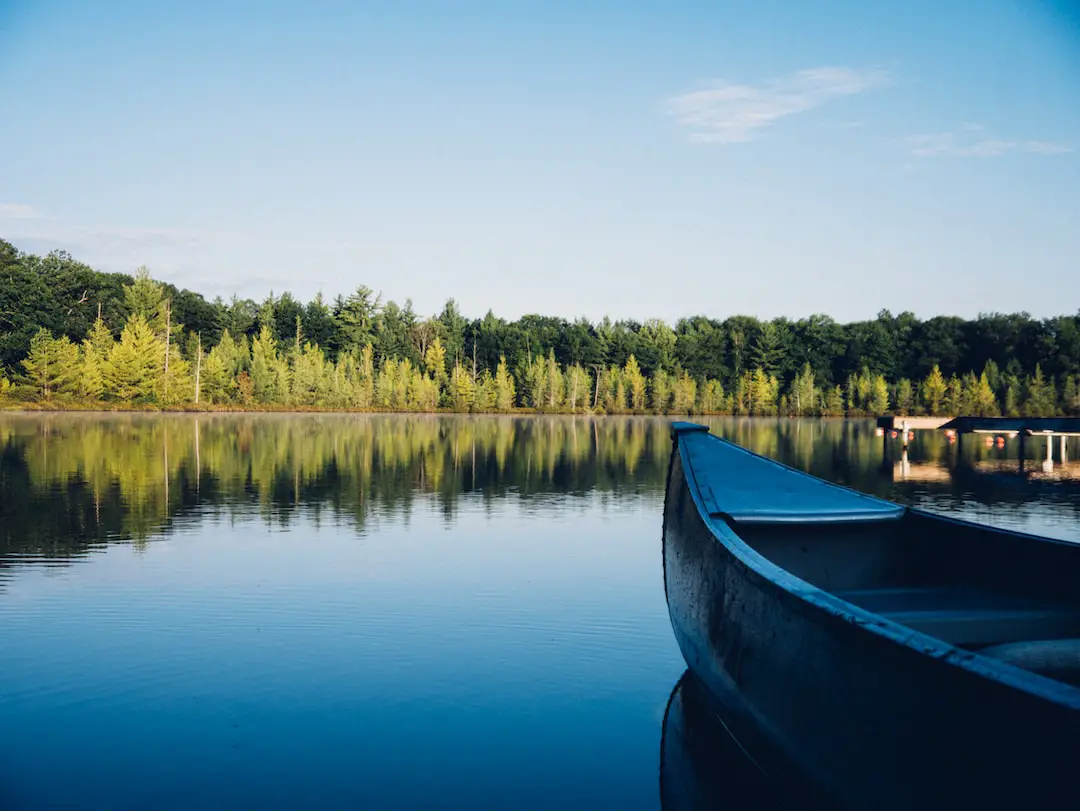
Lake Koba is a scenic freshwater lake located in the northern part of the Philippines.
What to see or do: Swimming, boating, and fishing are popular activities at Lake Koba.
Visitors can also rent a cottage or set up a picnic in one of the many designated areas around the lake.
There are also hiking trails and a zipline course nearby.
Don’t miss: Take a boat tour to explore the lake and see its stunning scenery up close. Keep an eye out for local bird species like the Philippine eagle and the endemic Mindanao bleeding-heart dove.
Insider travel tips: Visit during the cooler months from November to February to avoid the heat and humidity of peak summer season. Bring insect repellent and protective clothing as mosquitos and other insects are common.
Sample local delicacies like grilled tilapia and shrimp from the nearby fish farms.
19. Kouroussa Tomb
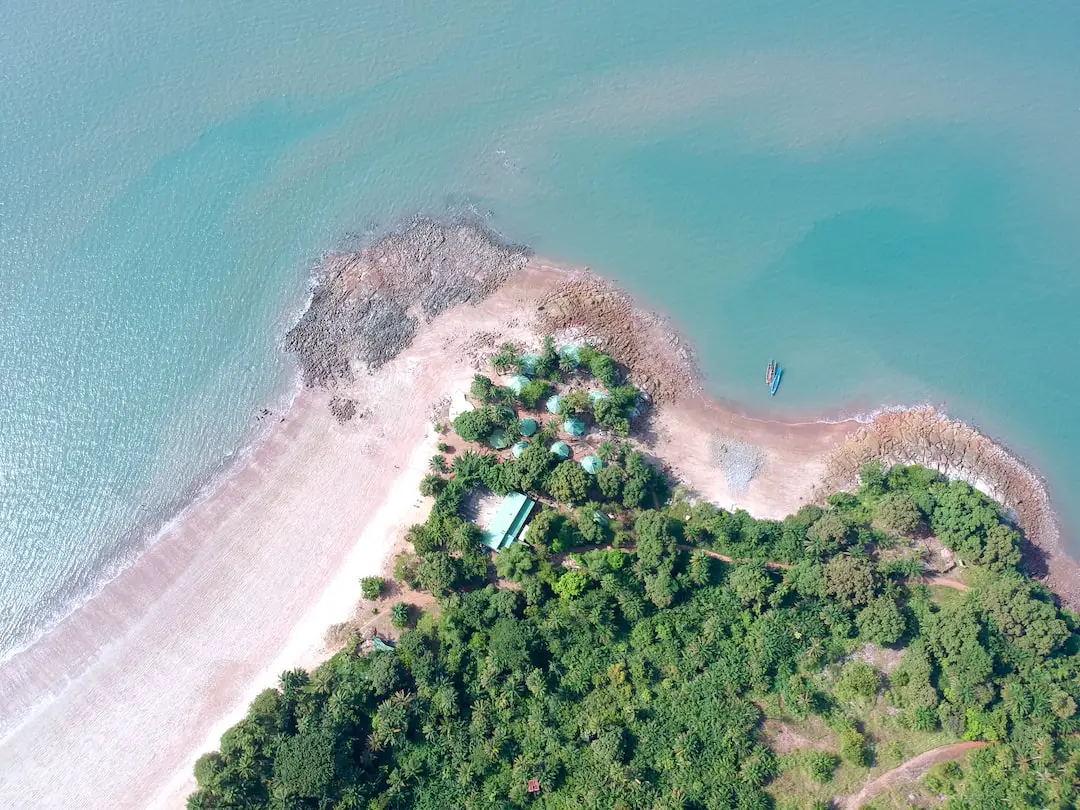
Kouroussa Tomb is a famous historical site located in the town of Kouroussa, Guinea.
What to see or do: Visitors can see the tomb of Soundiata Keita, the founder of the Mali Empire, and pay their respects to this revered figure in West African history.
The site also features a museum with displays showcasing the history and culture of the region.
Don’t miss: Don’t miss the opportunity to learn about the legend of Soundiata Keita and his extraordinary achievements in uniting the people of West Africa.
Insider travel tips: Visitors should be aware that Kouroussa Tomb is a religious site and should dress respectfully. Be sure to bring plenty of water and sunscreen, as temperatures can be high during the day.
It’s also recommended to hire a local guide to fully appreciate the history and significance of the site.
20. Tinkisso River
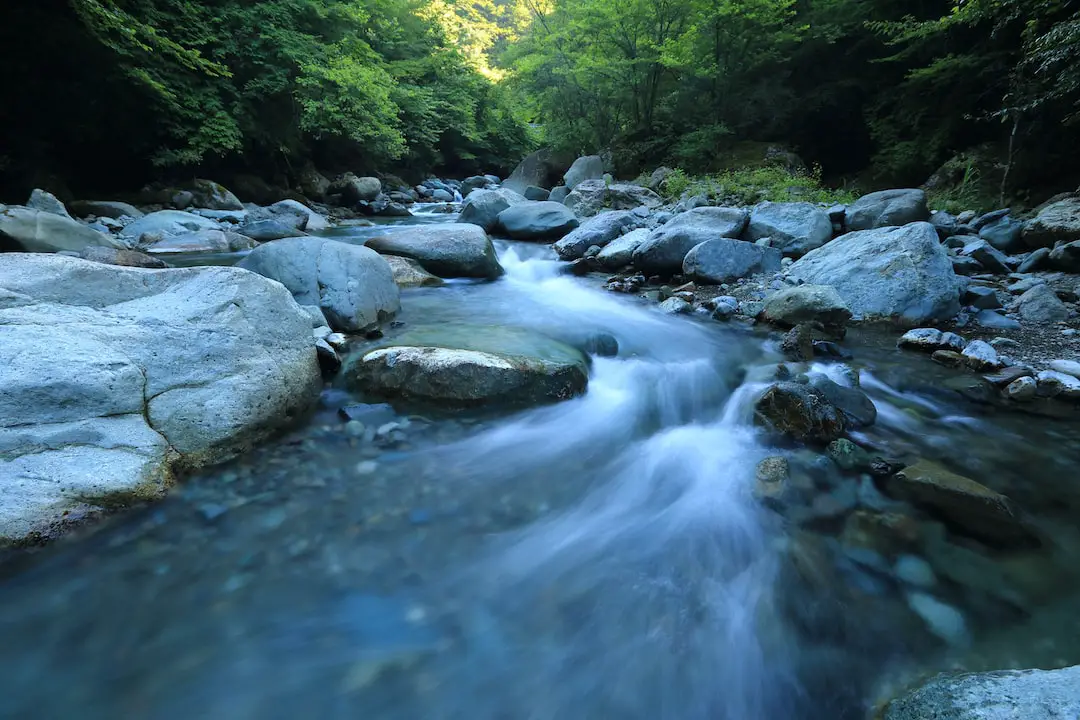
Tinkisso River is a major watercourse in West Africa that runs through Guinea and Mali.
What to see or do: Enjoy a scenic boat ride along the river and take in the stunning natural beauty. Discover local villages and immerse yourself in local culture by interacting with the friendly locals.
Don’t miss: Visit the Ireli Yata market, located near the river. Here you can buy traditional crafts, clothing, and local food.
Insider travel tips: Be prepared for the hot and humid climate, and bring plenty of sunscreen and water.
It’s best to hire a local guide, they can provide you with valuable information about the area and can help you communicate with the locals who may not speak English.
21. Fria Hydroelectric Dam
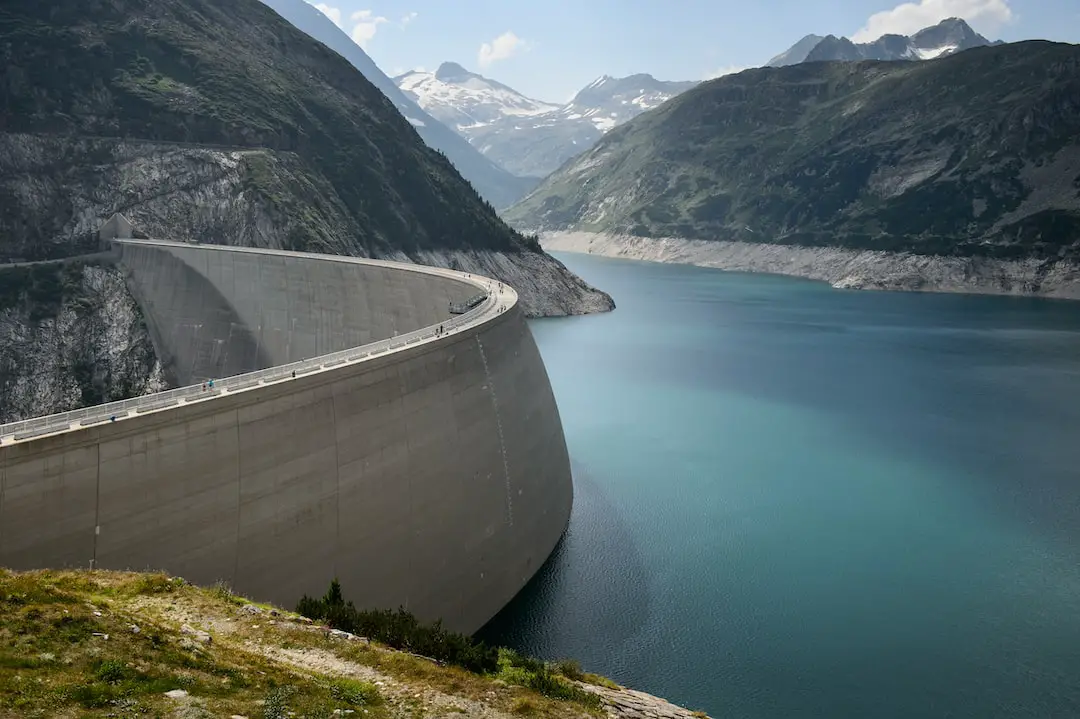
Fria Hydroelectric Dam is a large dam located in the city of Fria in Guinea. It is a major source of hydroelectric power in the region.
What to see or do: Visitors can’t tour the dam itself, but can enjoy scenic views of the hydroelectric lake that the dam has created. There are also several outdoor activities available such as fishing, swimming, and jet skiing.
Don’t miss: Don’t miss the opportunity to witness the impressive engineering feat that is the Fria Hydroelectric Dam. It is a symbol of Guinea’s commitment to sustainable energy and a significant contributor to the country’s economy.
Insider travel tips: It is best to visit the dam during the dry season (November to February) to enjoy the outdoor activities without any interruption.
Also, make sure to bring sun protection, as it can get quite hot during the day.
22. Boulbinet
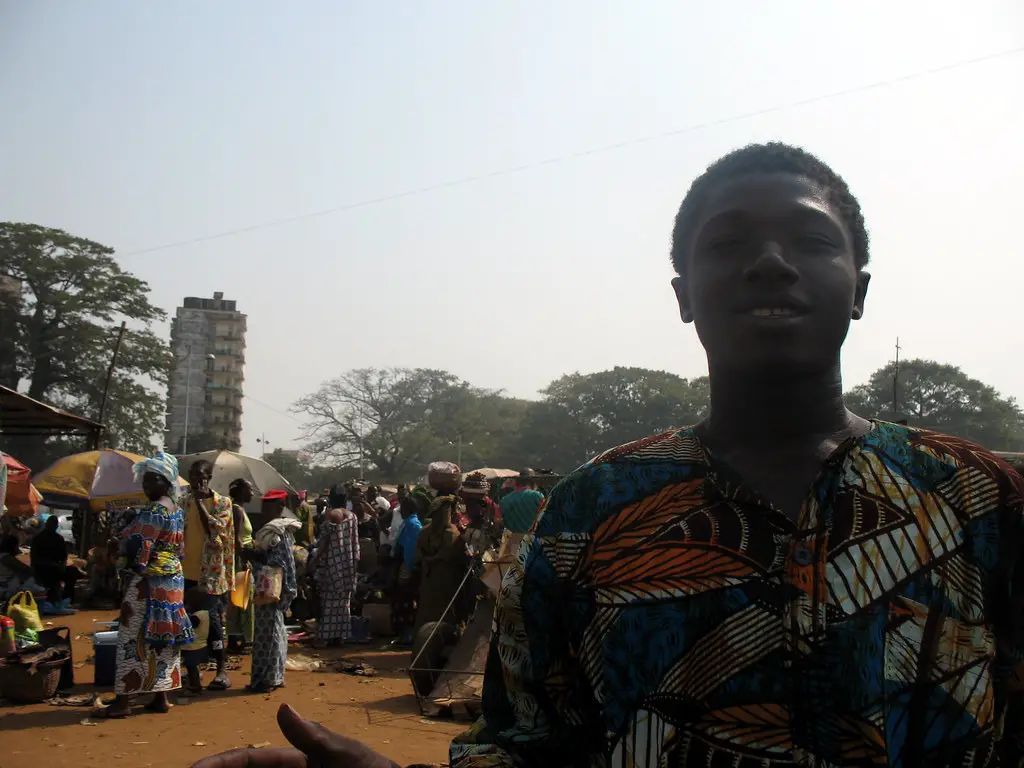
Boulbinet is a neighborhood located in the city of Conakry, the capital of Guinea.
What to see or do: Explore the lively market and try traditional Guinean dishes. Visit the National Museum of Guinea to learn about the history and culture of the country.
Stroll along the sandy beaches and watch a beautiful sunset over the Atlantic Ocean.
Don’t miss: The vibrant Vieux Marché (Old Market) where you can find everything from colorful fabrics to fresh produce. The beautiful architecture of the Presidential Palace and the Grande Mosque.
Insider travel tips: Be cautious of pickpockets and keep an eye on your belongings. Negotiate prices before buying anything, as prices in the market can be inflated.
Avoid visiting the market during peak hours, as it can get very crowded.
23. Guinea-Bissau Border Crossing
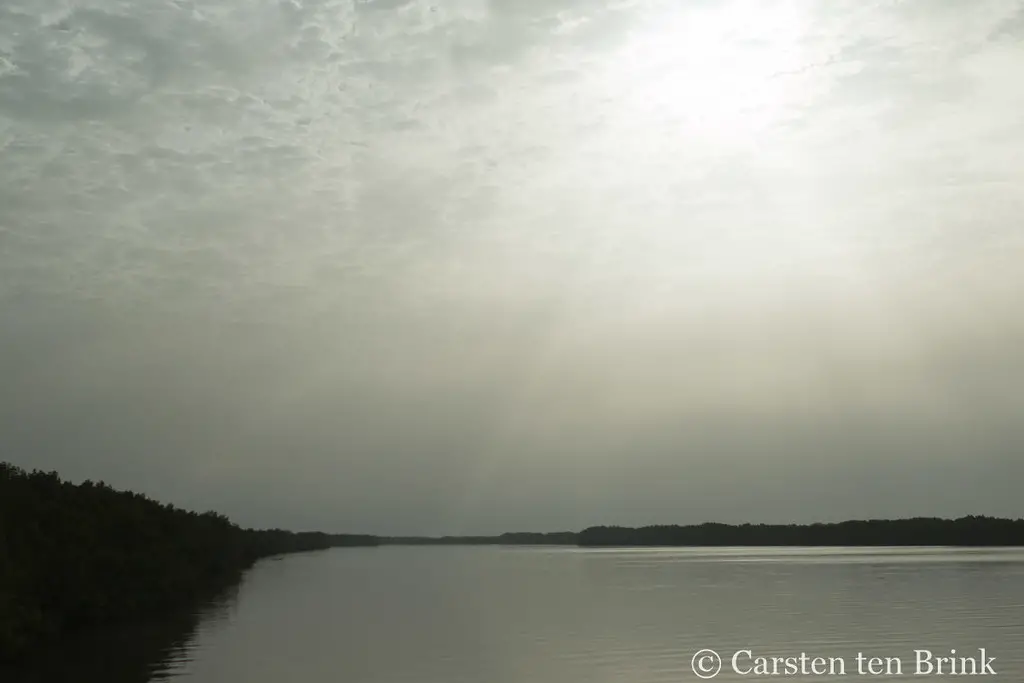
Border crossing between Guinea-Bissau and another country.
What to see or do: The border crossing is primarily used for transportation purposes, but it offers a glimpse into the local culture and way of life.
Don’t miss: Be sure to have all necessary travel documents and visas, and be prepared for the possibility of long wait times and thorough inspections.
Insider travel tips: Double-check entry and exit requirements before embarking on your journey, and have a plan in place for transportation on both sides of the border.
It’s also wise to bring snacks and water, as amenities are limited in the border area.
24. Télimélé Mosque
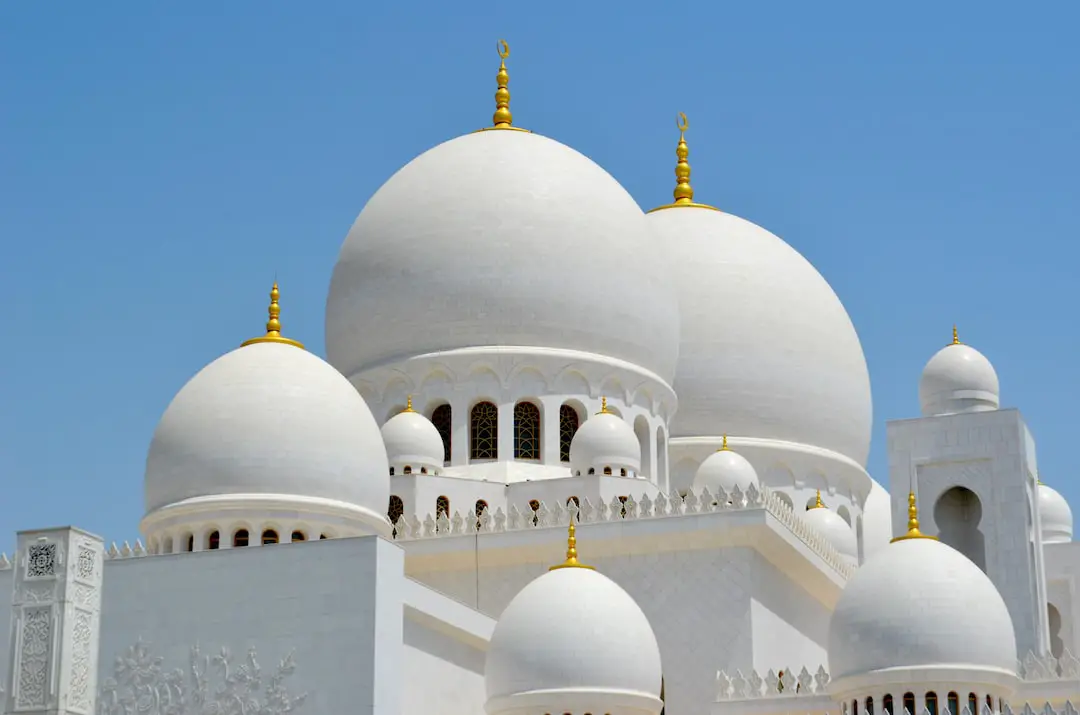
A historic mosque located in the town of Télimélé, Guinea.
What to see or do: Visit the mosque to take in the unique architecture and cultural significance of the site.
Don’t miss: Checking out the intricate details on the mosque’s exterior and interior, including the intricate carvings and intricate decorations.
Insider travel tips: As with any religious site, dress modestly and be respectful of the local customs and traditions. It’s also a good idea to bring along a local guide to provide historical and cultural context for the site.
25. Gambia River
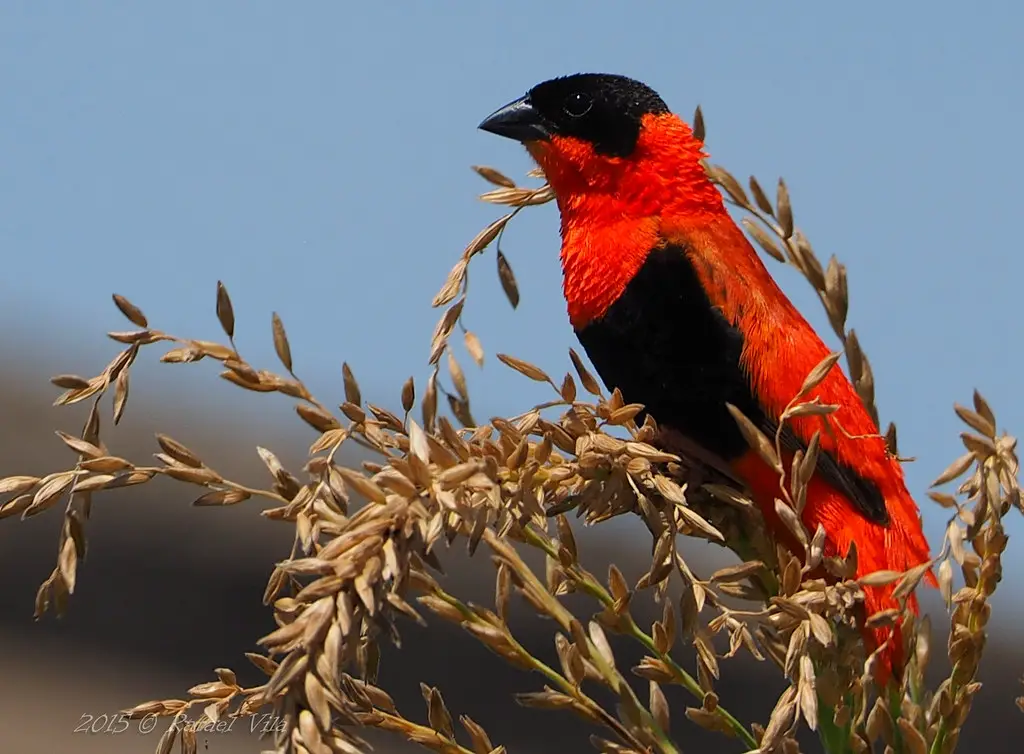
The Gambia River is a major river in West Africa, running for approximately 1,120 kilometers through Gambia and Senegal.
What to see or do: Take a river cruise to explore the beautiful scenery and wildlife along the river banks. Visit one of the many fishing villages or historic towns located along the river.
Go birdwatching in the lush wetlands surrounding the river.
Don’t miss: Kunta Kinte Island, a UNESCO World Heritage site that served as a major center of the transatlantic slave trade. The historic town of James Island, which was once a major colonial hub for the European slave trade.
The Abuko Nature Reserve, home to a wide variety of exotic wildlife including monkeys, crocodiles, and hyenas.
Insider travel tips: – Hire a local guide to show you the best spots and provide insight into the local culture and history.
26. Mamou Grand Mosque
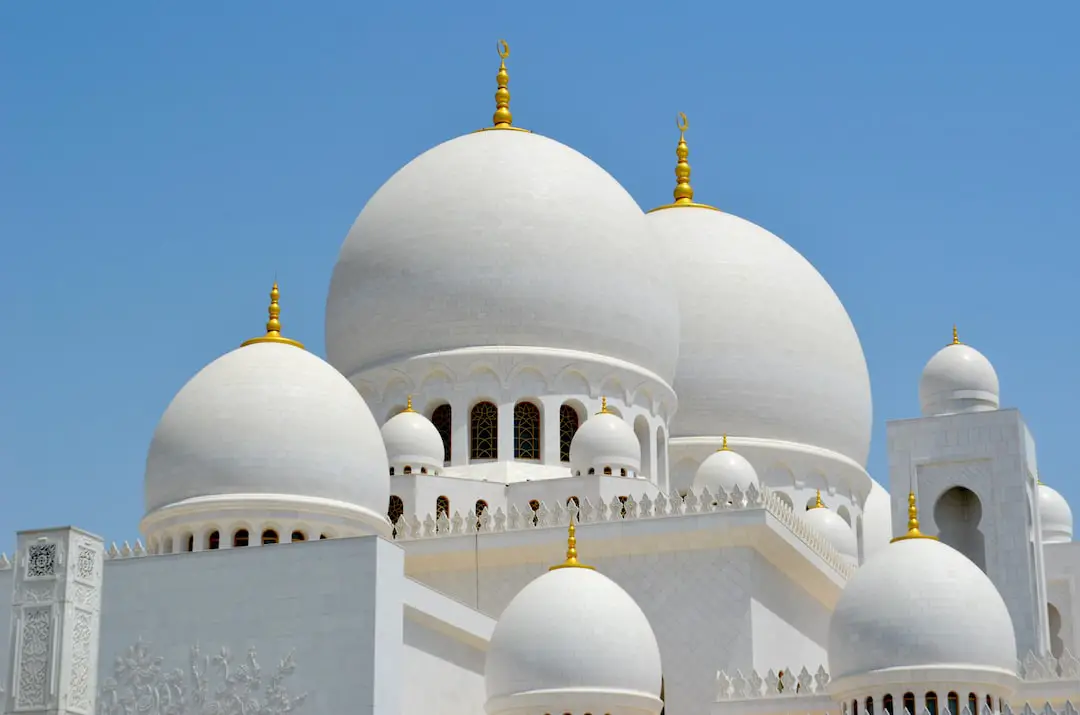
Mamou Grand Mosque, also known as Masjidul Taqwa, is a beautiful mosque located in Mamou, Guinea.
What to see or do: Visitors can enjoy the stunning architecture of the mosque, with its intricate detailing and stunning design.
The mosque is also a place of worship, and visitors are welcome to attend prayers and observe the local customs and traditions.
Don’t miss: Don’t miss the chance to see the striking minaret, which towers above the mosque and provides a stunning backdrop for photos.
Insider travel tips: – Dress modestly when visiting the mosque, covering your head and wearing long sleeves and pants.
27. Donka Hospital
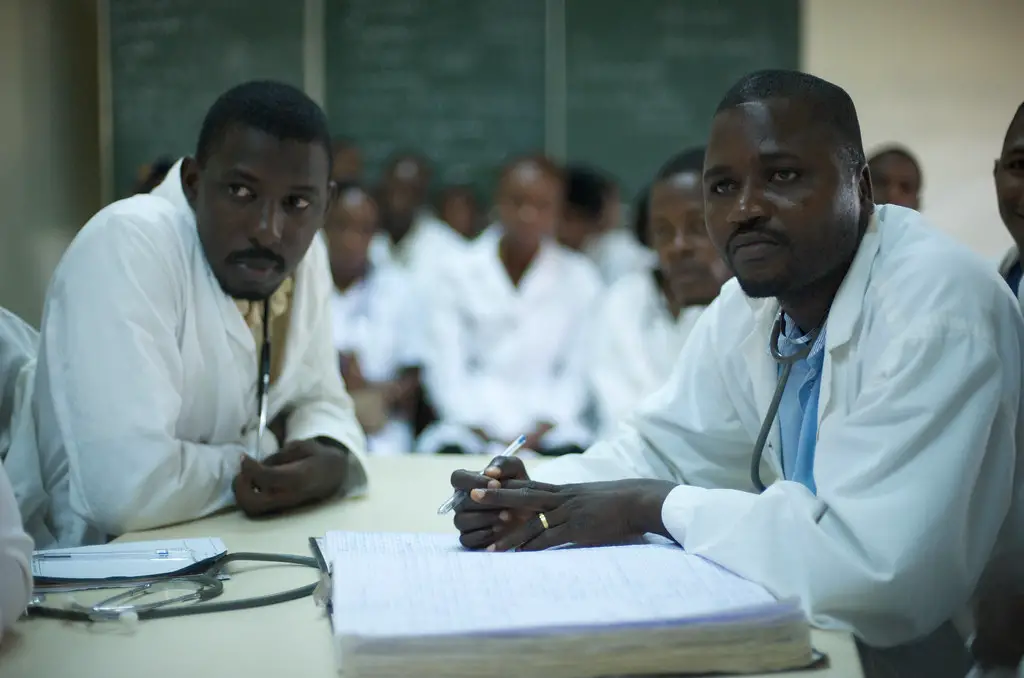
Donka Hospital is the largest and most well-known hospital in Conakry, Guinea.
What to see or do: As a visitor, you may not be able to participate in medical procedures, but it’s worthwhile to take a walk around the hospital complex to observe the daily activities and the sheer scale of the facility.
Don’t miss: Don’t miss the chance to witness the resilience and resourcefulness of doctors, nurses, and hospital staff in a country with limited resources to handle the healthcare needs of its population.
Insider travel tips: Be respectful of patients, medical staff, and hospital regulations. Photography is generally discouraged, and it’s best to ask for permission before taking any pictures.
It’s also advisable to bring your own hand sanitizer and avoid contact with patients to reduce the risk of infections.
💪 Support independent web, support us:
